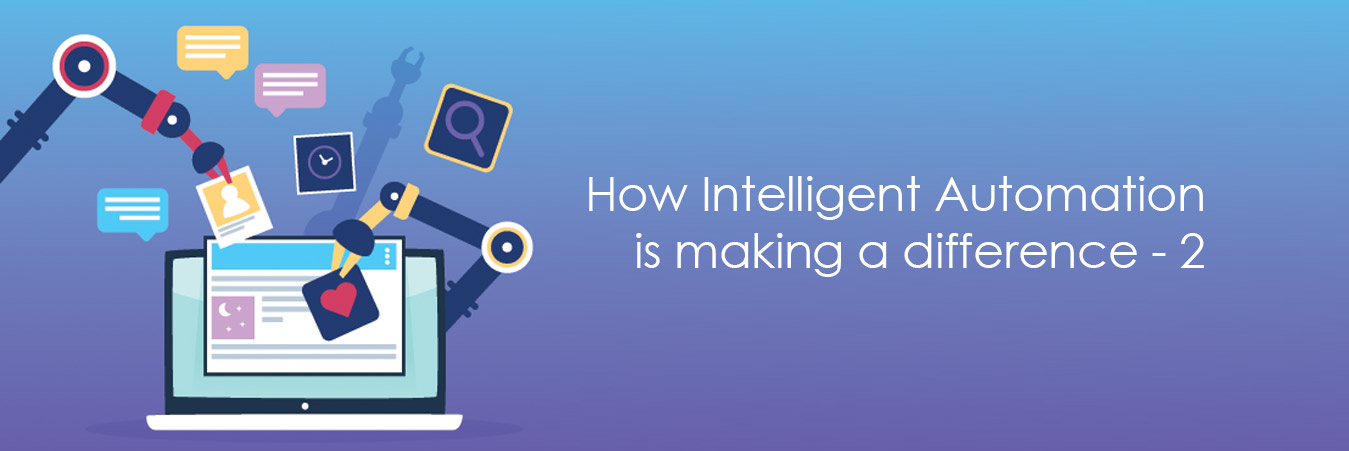How Intelligent Automation is making a difference - Blog Series 2

Is Your AI and Automation Strategy Right for You?
In the second blog of the series, we will show how Intelligent Automation has made significant improvements in the health and social care sector. By showing real examples of success, this series will demonstrate how Intelligent Automation is making a real difference in the public sector.
The health and social care sector is arguably the most important throughout the public sector. However, this doesn't mean that it is without problems. Despite its importance, many of the services provided are underfunded, and staff are overwhelmed with work.
By using Intelligent Automation, significant improvements have been made to cut staff workload and therefore, more importantly, improve patient safety.
Warrington and Halton NHS foundation trust provide health care services for over 500,000 patients while employing 4,200 members of staff. Being responsible for this large number of patients, it is crucial that patient safety is a top priority.
With this responsibility on staffs shoulders, it is also vital that the processes they must follow work efficiently, to avoid any additional stress. The foundation was facing many challenges with their current methods until an Intelligent Automation solution was implemented.
The Challenge
The foundation had a longstanding legacy of labour-intensive processes that included staff manually copying information from one system to another and transcribing patients' outcomes and procedures.
As a result of having these processes in place, the foundation ended up building large backlogs that inevitability led to errors and increased pressure on the already busy staff.
With these issues combined, overall patient safety had become a concern which is a serious issue when dealing with patients that have life-threatening injuries/illnesses on a daily basis.
To fight the continually squeezed funding the healthcare sector receives, these services needed a solution that could be implemented quickly at a minimal cost.
The Solution
By using Blue Prism's automation platform, several high-volume processes that were previously manual have been automated to provide much simpler outcomes.
Implemented into the master patient record system, the solution can track and transfer patient data without the risk of human error. By eliminating the risk of human error, staff can confidently make decisions based on the data provided while also avoiding the risk of unexpected costs or fines.
The solution also works at a near real-time meaning that there is little chance of work being duplicated and there is a massive reduction in backlogged work.
With a more straightforward, centralised solution much of the repetitive, error-prone workload was taken away from staff, allowing them to focus on dealing with as many patients as possible. This, in turn, improved overall patient safety.
The Results
Since the implementation of the Blue Prism solution, the foundation has seen significant improvements in many aspects.
The first significant benefit saw a saving of over £1 million. Thanks to the solution optimising data quality and increasing income, the net savings the foundation has made will go towards improving the hospitals and service the patients receive.
The Intelligent Automation solution that optimises the once manual processes has also saved up to 3 full-time equivalents. However, there are no cuts to jobs as current staff continue to work under less scrutiny and pressure while there is an opportunity to hire new people to monitor the new digital workforce.
Another significant improvement since the implementation of the Intelligent Automation solution is that staff can get a real-time view of the patient data thanks to the centralisation of the system.
By combining these benefits, the ultimate goal of improved patient safety was achieved.
With more timely processing of patient data and the eradication of human errors, the Intelligent Automation solution meant patients could be seen quicker and follow up appointments arranged straight after. Additionally, removing the time-consuming manual processes from the staff's workload meant more time could be spent with each patient.
Seeing another example of successful Intelligent Automation implementation continues to show how the solution is making a real positive impact on peoples lives. One of the hardest parts of implementing this technology is proving that it works. Many organisations can be understandably sceptical of changing their longstanding systems and processes. However, examples like this one have shown just how much of difference can be made when putting these processes into practice. As these success stories begin to build it up, it is now becoming a no-brainer to implement Intelligent Automation with the clear difference it is making to peoples lives.

